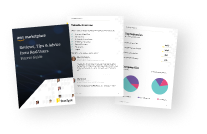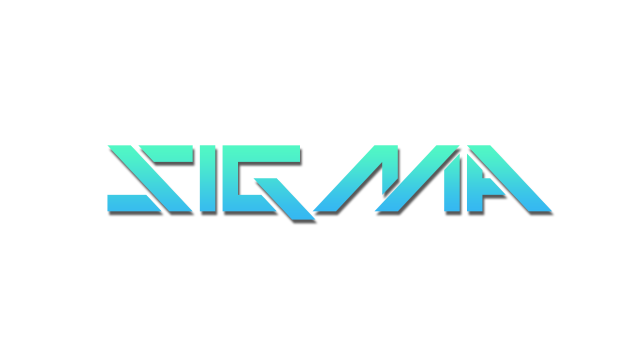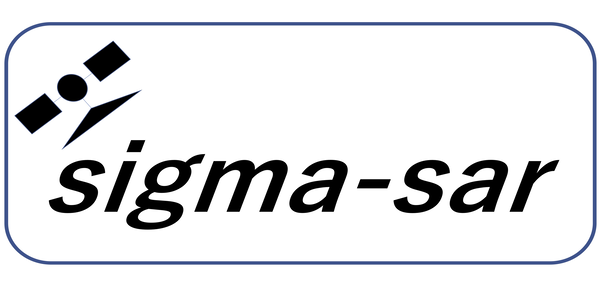
Overview
Threats evolve fast and it is difficult to analyze and validate disparate signals of malicious activity in time to mitigate risks and thwart attacks. Designed for complex and high-stakes environments, the SIGMA sensor-agnostic platform elevates situational awareness and streamlines response strategies to prevent disasters before they happen.
Highlights
- Consolidate data across different sensor types, manufacturers and form factors (static, Intuitive Command and Control Accessible from anywhere, the SIGMA web-based platform disseminates critical data in real-time, empowering planners, leaders and operators with actionable intelligence. vehicle, or wearable) so teams can better understand the overall threat environment. Historical data helps separate signal from noise to prioritize high-value alerts within established patterns of life.
- Automated, real-time monitoring and data collection is faster than manually checking sensors and retrieving. Using SIGMA you gain the ability to send real time sensor data and alerts from all deployed devices for analysis, prioritization, and response. Plus, establishing operational baselines reduces false positives and prioritizes anomalous alerts so teams can respond quickly.
- Originally designed for RadNuc use cases, SIGMA's adaptable platform is now revolutionizing threat and risk detection across varying environments, from metropolitan areas to remote austere locations. SIGMA is capable of ingesting multiple domains, expanding beyond RadNuc to Chemical/ Biological agents, RF energy, Wearable Biometrics, and Meteorological Data.
Details
Introducing multi-product solutions
You can now purchase comprehensive solutions tailored to use cases and industries.

Features and programs
Buyer guide

Financing for AWS Marketplace purchases

Pricing
Dimension | Description | Cost/12 months |
|---|---|---|
Intro | Sigma Licenses | $25,000.00 |
Medium | Sigma Medium Sensor Bundle | $100,000.00 |
Large | Sigma Large Sensor Bundle | $250,000.00 |
Small | Sigma Small Sensor Bundle | $50,000.00 |
Vendor refund policy
Refunds are typically not permitted unless defined by a private offer contract.
How can we make this page better?

Legal
Vendor terms and conditions
Content disclaimer
Delivery details
Software as a Service (SaaS)
SaaS delivers cloud-based software applications directly to customers over the internet. You can access these applications through a subscription model. You will pay recurring monthly usage fees through your AWS bill, while AWS handles deployment and infrastructure management, ensuring scalability, reliability, and seamless integration with other AWS services.
Support
Vendor support
Support during and post deployment can be reached via help@dtect.net . Complete support hours, SLA, and terms are provided as a part of each customer contract.
Additional technical documentation is also available to customers.
AWS infrastructure support
AWS Support is a one-on-one, fast-response support channel that is staffed 24x7x365 with experienced and technical support engineers. The service helps customers of all sizes and technical abilities to successfully utilize the products and features provided by Amazon Web Services.
Similar products




Customer reviews
Reporting dashboards have streamlined tracking and decision-making but present a steep learning curve
What is our primary use case?
My main use case for Sigma is that there are a bunch of reports, and many of our main reports are built on Sigma . I use it as a dashboard, review the reports, filter through there, and use it to help make decisions.
A quick specific example of a report or dashboard I use in Sigma that helps me make decisions is that it lists the number of reviews that we have gotten for a certain product or a certain campaign, and I can reuse that in my marketing to say that we have done X amount of whatever. It is mainly a reporting dashboard that I use for keeping track of certain things.
What is most valuable?
Sigma offers the ability to pull a lot of data, and I think the filtering is pretty good.
The filtering feature in Sigma helps me because you can get pretty in-depth, and I just appreciate it because you are able to drill down on whatever you are looking at.
Sigma has positively impacted my organization because I think it has been a huge impact, and we use it for all our reporting and our dashboards for tracking. It is a really big, integral part of our company.
What needs improvement?
I think Sigma can be improved because, for the last ten months since I first started here, this is my first time ever using it, and I think there is a steep learning curve. It is not as intuitive as I was hoping, so once you figure it out and get going, it is easy to use, but I would say at the very beginning, the learning experience is kind of hard.
For how long have I used the solution?
I have been using Sigma for ten months.
What do I think about the stability of the solution?
Sigma is stable from what I have seen.
What do I think about the scalability of the solution?
Sigma's scalability is nice because everybody on the team has access and uses it, and it is nice that permissions are easily set as well, so you only get to see what you need to see and you can share what needs to be shared.
How are customer service and support?
I have not had to use customer support, so I cannot rate the customer support on a scale of one to ten.
How would you rate customer service and support?
Negative
Which solution did I use previously and why did I switch?
I did not previously use a different solution before Sigma.
How was the initial setup?
I manage user access and permissions within Sigma, and that process is very easy.
What about the implementation team?
I stay updated with new features or updates in Sigma, but I am not personally involved in that. I do not receive any notifications about that.
What was our ROI?
I have definitely seen a return on investment through time saving because once the dashboards are built, they are built. Once we get them built, you are able to share with whoever needs them, so you get live data, and it has been a huge time saver.
What's my experience with pricing, setup cost, and licensing?
I do not know much about my experience with pricing, setup cost, and licensing because I am not heavily involved in that.
Which other solutions did I evaluate?
We did not evaluate other options before choosing Sigma.
What other advice do I have?
My advice to others looking into using Sigma is to take the time to learn how to set it up at the get-go and understand that there is a learning curve. I would rate this review a seven out of ten.
Analyzing user return visits and accessing program data has become significantly faster
What is our primary use case?
My main use case for Sigma is to check on the status of our accounts, my accounts, and my programs. I love using a tool where I can analyze the return visits of leads that we've already sent to customers.
I use Sigma for analyzing those return visits by loading it, setting the fields for a particular account of mine, and I can see the leads that we've sent. In analyzing, I let Sigma do its magic and can run another report that tells me every time one of those lead accounts has returned to PeerSpot to continue their research. This has been an invaluable resource for me to share with some of our customers to help them understand the value of our audience in showing how their leads are continuing to visit and do their research, which provides our customers with great intelligence for their account scoring and lead handling.
I'm using Sigma to check on all the programs. That was one of my favorite use cases, but to see how many leads have been delivered, to see how many reviews have been collected, to see how many review interviews have been set up, how our outreach center is contacting prospects for leaving reviews. There are a lot of different use cases for Sigma.
What is most valuable?
Having those dashboards set up in Sigma has made things easier for me and my team because it's just going into one report. There are a couple of different tabs in the same report rather than opening multiple different dashboards and reports from Salesforce , and that just speeds things up and saves some time.
Sigma has positively affected my organization by saving us time in accessing information, which ultimately gets us to complete projects faster.
I understand the value and would say I get through tasks 25% faster using Sigma.
What needs improvement?
Sigma can be improved in terms of speed; it would be great if it could process the data even faster. I think it's more of our use of it that I'm not responsible for in getting the Salesforce data into Sigma. Sometimes I can't find what I need or the data isn't quite uploaded correctly, but I think it's a problem of the entry into Salesforce, not getting it over to Sigma. It would be nice if the reports also included more graphics and were more visually pleasing or compelling rather than just data.
For how long have I used the solution?
We started using Sigma as a company about a year and a half ago.
What do I think about the stability of the solution?
I think Sigma is stable.
How are customer service and support?
I haven't used customer support at all.
How would you rate customer service and support?
Neutral
Which solution did I use previously and why did I switch?
Before Sigma, we used a different solution, but I don't remember what it was called. I wasn't involved in the decision to make the switch, so it's irrelevant. Sigma is a good choice.
What was our ROI?
I have seen a return on investment with Sigma; we already said that it saves about a quarter, it gets me to answers about 25% faster.
What's my experience with pricing, setup cost, and licensing?
When it comes to pricing, setup cost, and licensing, it has nothing to do with me.
Which other solutions did I evaluate?
I don't know if my team evaluated other options before choosing Sigma.
What other advice do I have?
I'm not doing any customization with Sigma. The ease of use is there. It takes a little while just to get used to it. Sometimes when I'm running an estimate for leads, in my haste, I try to get the answers, but I need to wait for it to finish processing all the data, which is totally reasonable. But it's pretty easy to use.
My advice for others looking into using Sigma is to make sure you set up the reports and the dashboards in the most efficient way. Ask for feedback from your teams if multiple people are going to be using it. Because once it's set up, it's a very powerful tool. But if not all the perfect data is in there, then it's just not going to do its job.
On a scale of one to ten, I rate Sigma an eight.
Great collaboration with intuitive interface and dynamic visualization capabilities
What is our primary use case?
The project I worked on with Sigma involved creating a migration assessment tracker. We fetch all the data from the Tableau server and the cloud through the metadata API or the REST API. Then our data engineering team puts that particular data through the Alteryx workflow, refines all the components, and pushes the data into Snowflake . We then connect Snowflake with Sigma . With that report, you can compute how much time it will take to migrate a particular site, how many workbooks exist, how many tabs are in Tableau, the duration required, and the complexity of the workbook based on the calculations.
The report also shows if any workbook is associated with upstream workflows or how many published data sources exist. We brought this information onto Sigma and created our report accordingly to estimate the migration time.
It serves the marketing team by ensuring that when receiving a project involving migration from Tableau to Sigma, they can estimate the time required. It estimates all efforts based on these complexities, the size of the Tableau server, and the number of users involved.
What is most valuable?
Compared to other BI tools, each tool has its own capabilities. Sigma has excellent features, such as lookup tables where you can easily bring data that are not interrelated or at different granularity. Because in Tableau, you can see various LODs. To create those same functionalities in Sigma, we generally use lookup tables and replicate that functionality there. It has multiple good controls such as segmented controls. It also provides tab options with the inbuilt feature in the interface itself. If you need to create a similar thing in Tableau, you need to create separate sheets or buttons. Sigma provides several cool features. You can create multiple visuals, and the maps functionality is very good in Sigma. We explored all the charts that Sigma has provided in its interface. Although Sigma is introducing some AI capabilities, that has yet to be explored from our side. We have explored the interface part, creating dashboards, and managing data sources with joins and relationships.
What needs improvement?
As we are exploring multiple features in Sigma, I think Sigma can add more functionality. As Power BI gives multiple modeling options in its interface with the query editor, those features can be added in Sigma for intuitiveness or for making the data very clean. From the dashboarding perspective, it performs well. However, from the modeling perspective, it requires more capabilities that can be added in Sigma.
The main improvement needed is in data modeling capabilities. If they add those features in the near future, it would be very helpful for us to implement the same or do the data cleansing part in the Sigma tool itself.
For how long have I used the solution?
I have almost eight years of experience working with Tableau and Power BI. For Sigma, I have been working for the past two years.
What was my experience with deployment of the solution?
I am not sure if my company purchased Sigma through the AWS Marketplace .
What do I think about the stability of the solution?
We did not face typical errors during our project with Sigma. In the near future, if we receive support from Sigma, that would be more helpful. There are multiple teams in my organization working on Sigma projects. We have not connected with Sigma support yet. In the future, I can provide more detailed reviews.
What do I think about the scalability of the solution?
If data is substantial, in Sigma's case, the data is always live. It is not a kind of extract, whereas Tableau provides both live and extract functionality.
How are customer service and support?
On the scale of 1 to 10, I rate Sigma an 8.5 because there are multiple tools whose setup needs to be done, and the servers are also on physical machines such as Tableau server for maintaining all those components. As Sigma is a cloud platform, you do not need to do all that maintenance work. Regarding visualization and data modeling, as mentioned earlier, they can improve on those aspects. The functionality and interface have improved significantly with their latest versions. Previously, all options were on the left-hand side, and now there are floating themes at the bottom where you can easily select all options and create a good dashboard.
How would you rate customer service and support?
Positive
Which solution did I use previously and why did I switch?
In Tableau, you have filter actions where you can select any particular sheet, click on that particular button, and the data is filtered accordingly. You can do a similar thing with the help of actions in Sigma. You can even change the dynamic axis. If you want to change the X-axis and Y-axis, you can do it with the help of controls, the segmented controls, and with the help of actions.
How was the initial setup?
Setting up Sigma is not complex. If you know all the components through their documentation, you can easily implement it as the documentation they created is comprehensive and contains all the necessary information.
What about the implementation team?
As we are a hybrid team, operating from India as well as the US side, we do the development part and our US team connects with the clients and deploys all components in the environment. We are primarily developers, but we can also manage the publishing and other tasks.
Which other solutions did I evaluate?
Regarding the differences between Sigma and Tableau, for visualization, Tableau is the best tool I have worked with because you can change the visualization accordingly by creating different calculated fields. Sigma could add more visualizations. In Tableau, you can do forecasting with the help of the analytics tab. If Sigma also adds these features, it would be beneficial. In Tableau, there is a smoothing model you can select to do forecasting, create good trend lines, and add effective reference lines while creating trends.
What other advice do I have?
I prefer to remain anonymous. Based on my experience with Sigma, I would rate it 8.5 out of 10.
Which deployment model are you using for this solution?
If public cloud, private cloud, or hybrid cloud, which cloud provider do you use?
Modern dashboards and reports enhance decision-making and presentations
What is our primary use case?
We use Sigma for all of our data visualization and reporting. It works off of Snowflake , so it pulls in data from Salesforce , NetSuite, our website, and Google Analytics . Via Snowflake , we're able to have unified, single views. Sigma serves as the visualization and reporting front end.
What is most valuable?
Sigma is widely adopted across our organization for creating dashboards and reports. The solution feels more modern than Tableau , and it's not as sales-oriented, offering a more generalized approach. The visual appeal of Sigma stands out, as the graphs and charts look visually nicer compared to Tableau . The use of Sigma in decision-making, presentations to customers, and reporting to investors showcases its value in handling data-related tasks.
What needs improvement?
I would love to be able to create my own reports in Sigma, as I can do in Salesforce . Either we are not using it properly, or the software is too complicated. It would be great if there was a way for me to create reports without relying on a data analyst. I'm interested in the upcoming AI co-pilot to enable natural language generation of visualizations and reports. Also, the marketing materials did not match what I feel we've received. Regarding pricing, Sigma's pricing doesn't allow more people to have the ability to create their own reports. We have very few admin or report creator licenses, while everyone else is on a view-only mode.
For how long have I used the solution?
We have been using Sigma for around a year and a half.
Which solution did I use previously and why did I switch?
We previously used Tableau. We found Tableau to be a less modern solution, and we hoped Sigma would be more self-serve. However, it's not more self-serve than Tableau.
How was the initial setup?
I didn't perform the initial setup. The migration from Tableau took quite a bit of time, indicating that it could benefit from being more straightforward and easier.
What was our ROI?
While I don't have specific metrics, Sigma is integral to our business processes. We use it in decision-making and for customer and investor presentations. It's essential for everything data-related within our company.
What's my experience with pricing, setup cost, and licensing?
The pricing of Sigma is a concern, as it restricts our ability to provide more users with report-creating capabilities due to the high cost of admin or report creator licenses. Most users have view-only access.
Which other solutions did I evaluate?
I did not participate in the evaluation process, but our data analysts considered other solutions besides Tableau and Sigma, though I can't recall which ones.
What other advice do I have?
Determine your requirements carefully as there are many data visualization tools available. Each has pros and cons, so ensure Sigma fits your needs. Additionally, I rate Sigma an eight out of ten because it meets our needs, but there are some disappointments with the software.
Detailed reports improve reporting capabilities but need enhancement
What is our primary use case?
Our primary use case for Sigma is reporting.
What is most valuable?
The most valuable feature of Sigma is the detailed reports. These reports offer a lot of details and have positively impacted our ability to generate better reports for the organization.
What needs improvement?
Sigma could have better reports.
For how long have I used the solution?
I have been using Sigma for a year.